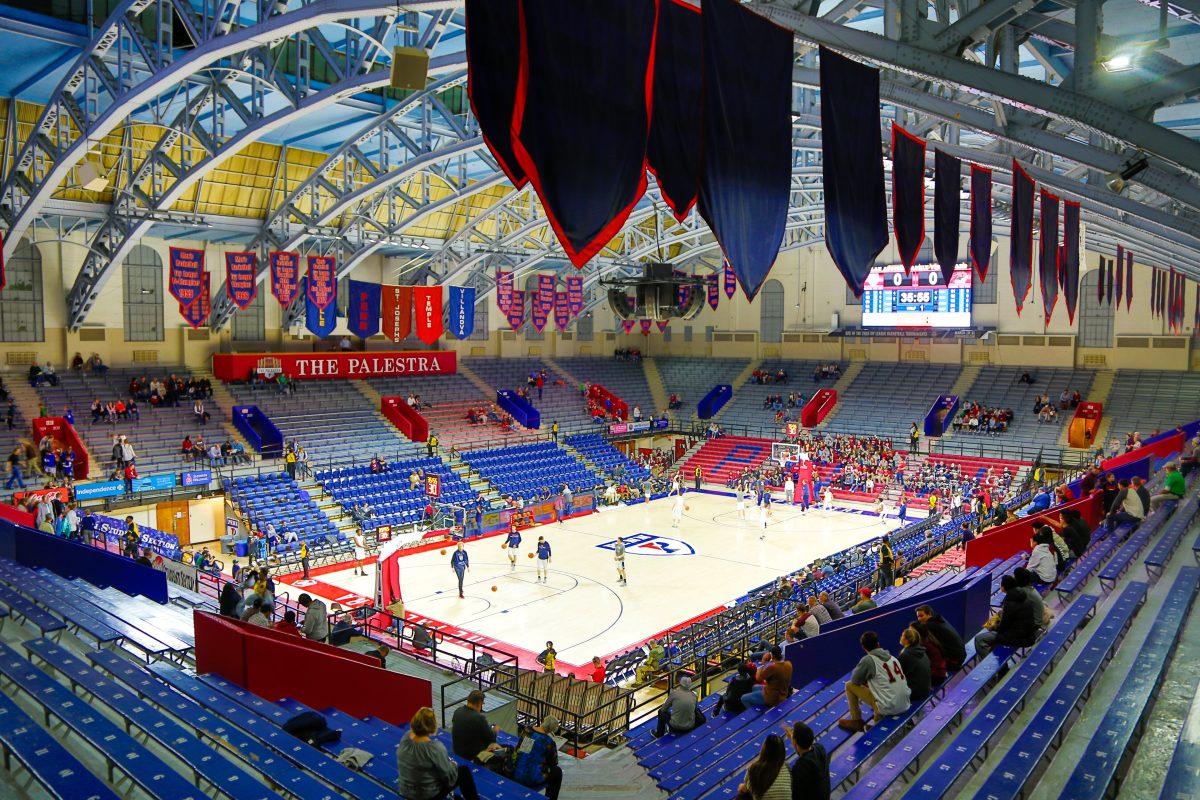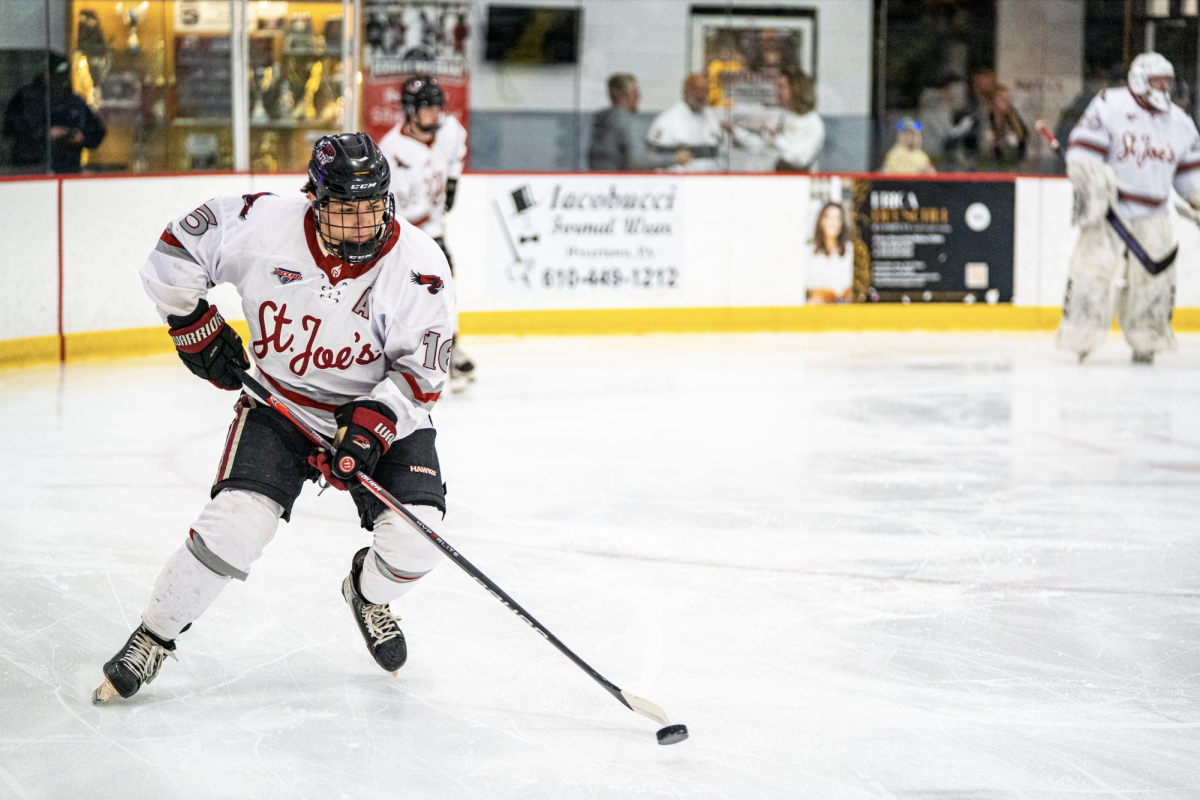History of the world famous Palestra
College basketball fans know the building dubbed ‘The Cathedral of College Basketball’ located just five miles from St. Joe’s on 33rd street: the Palestra.
The 91-year-old basketball arena is home to the University of Pennsylvania Quakers, but it was, at one-time, home to the Philadelphia Big 5 – St. Joe’s, Penn, Temple University, Villanova University and La Salle University. The historic ‘Holy War’ between St. Joe’s and Villanova was the first Big 5 matchup held on Dec. 14, 1955.
Men’s basketball head coach Phil Martelli spent a lot of time at the arena on Penn’s campus during the 2008-09 season, when Alumni Memorial Fieldhouse was being renovated into Hagan Arena. Like Hagan Arena, the space is loud and the fans are close to the game.
“It’s the intimacy; the locker rooms are small and the media room is small,” Martelli said. “It’s a building built for basketball, and every seat is a great seat. They might be uncomfortable, but you’re close to the action.”
The storied arena can hold 8,722 fans, with seatings on top of the action. There are no barriers between the bleachers and the court, so there isn’t a bad seat in the house.
Martelli has been a coach of the St. Joe’s men’s basketball team since 1985, but before this, he attended Widener University in Chester, Pa. and grew up in Media, Pa., both just outside of Philadelphia.
He is extremely familiar with the historic stadium, having spent his entire life in Southeastern Pennsylvania.
“Growing up in Philadelphia, you can look around the crowd and pick out someone from your neighborhood, your church or your dorm,” Martelli said. “There was a person in every seat.”
Because of its age and nostalgic atmosphere, the Palestra has hosted more games and visiting teams than any other facility in the country. Fans and players alike recognize the rich history held on the gymnasium floor.
The court was refurbished in 1955, expanding to 10,000 seats and adding other features. On Dec. 14 of the same year, St. Joe’s and Villanova were the first teams to face off on the court in University City.
A Greek Studies professor at Penn, William N. Bates, Ph.D., bestowed the Palestra with its name, based on events in ancient Greece. Men would train and then compete with one another in a rectangular enclosure called a palestra, and citizens would gather to watch.
The arena is aptly named, as the Big 5 continually duked it out to see who would reign supreme in the city of brotherly love from 1955 to 1986. The league was like no other in the fact that all five teams resided within 15 miles from one another. Former head coach Jack Ramsay, who led the Hawks to seven Big 5 titles between 1955-66, is quoted as saying, “winning the Big 5 championship was more important to me than winning the national championship” in Robert S. Lyons’s book “Palestra: A History of the Big Five Pandemonium.”
Fans of Philadelphia sports teams have a history of being passionate observers, which is why The Palestra’s intimate design is so fitting.
“Anyone who wants to experience college basketball, there can be no better place than a January Saturday night at the Palestra,” Martelli said.
With the footsteps of prominent basketball players like Wilt Chamberlain, Jerry West and Oscar Robinson having walked across the court at one time, it is an experience for today’s players unlike any other. Jameer Nelson, Langston Galloway and DeAndre Bembry are former Hawks who frequented the arena and are currently in the NBA.
It is easy to see why players are so excited to follow that legacy with the Hawks’ prolific history at the venue. Redshirt sophomore basketball forward Pierfrancesco Oliva played in the Palestra in a game against Penn on Jan. 27.
“It’s part of the Philly tradition,” Oliva said. “It’s a great atmosphere to play in. The [Penn] fans made it hard for us but we had a lot of fans here. It’s great; it’s the Palestra. It’s amazing.”
No matter how fans feel about Big 5 basketball, there is no question that the Palestra put the city on the college basketball map.















































